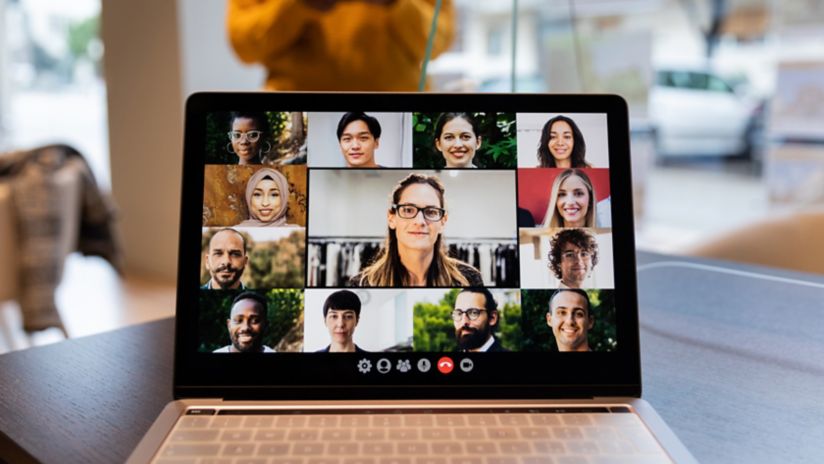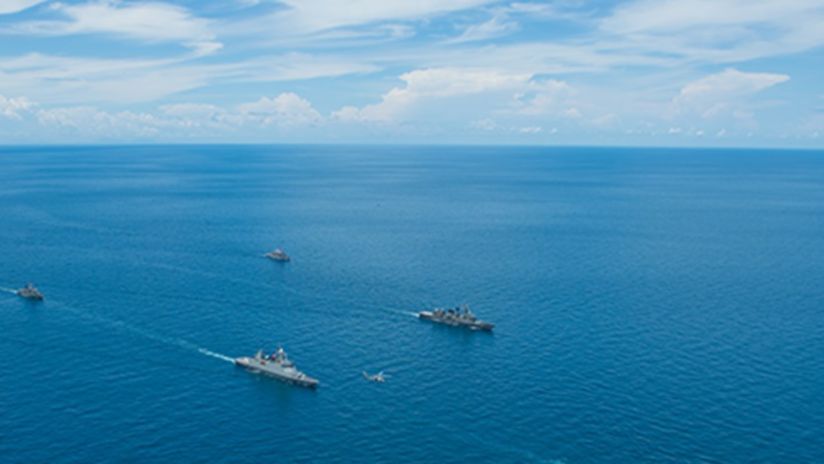From Phnom Penh to Indigo West: three decades of connecting Asia

When it comes to creating telecommunications infrastructure, there’s not much that Andrew Hankins, Head of Network Evolution for Telstra Enterprise, hasn’t seen in his 30 years at Telstra. Here he looks back on some of his experiences, from Phnom Penh to San Francisco, where he helped create the networks that deliver connectivity as we know it in Asia Pacific today. When you think about the most connected places in the world, you might instinctively think of New York or Silicon Valley. But really you need to look to Asia Pacific where Hong Kong and Singapore lead the way.
Recently, together with our consortium partners, we announced the Indigo West subsea cable was ready for service. Indigo has a capacity of 36 terabytes per second and promises very low latency connection between Perth and Singapore. It is one of the first ‘open cables’ and deploys cutting-edge engineering to offer about 200,000 times more capacity than cables carried in the 1980s.
It’s fair to say things have changed since I first started at the Overseas Telecommunications Commission (the OTC – now Telstra). In fact, Indigo West is just one of many milestones in telecoms history I have witnessed in my 30 years at Telstra.
In at the deep end
My experiences in Asia started in the late 1980s. The OTC sent me to Cambodia where, like some other countries in the region at the time, networks were almost non-existent.
Our first job was building out international connectivity with satellite stations in the country’s capital Phnom Penh. If you wanted to make a call out of the country, you had to connect to the circuits running either to Hanoi or Moscow. It was certainly a new experience given this was around the time of the end of the Cold War and fall of the Berlin Wall.
Unlike my first postings at the Elizabeth Street office and the Oxford Falls Satellite station testing new antennas in the comfortable surrounds of Sydney’s suburbs, our work in Cambodia was characterised by frequent blackouts and trips to the Russian embassy to stock up on cornflakes.
The United Nations arrived in 1992 with a mandate to restore civil government, hold elections and rehabilitate a country ravaged by civil war and military occupation.
As the UN embarked on a nation-building program, we built a communications network for around 22,000 military and civilian personnel. This included the first mobile network in the country.
Even with the UN’s large presence, it wasn’t without its challenges. Each network site had to be checked and cleared of landmines before we could start construction. And members of our team had to travel to the Khmer Rouge heartlands to install phone lines and satellite links.
Soon the telecom market began to open up. Three mobile phone companies were allowed to set up and operate in the country. Between 1992 and 1995 we built a larger international exchange and infrastructure to connect the mobile phone networks.
Starting from scratch, Cambodia effectively leapfrogged generations of technology, including copper fixed lines. At one point, the country had one of the highest ratios of mobiles to fixed line connections in the world. And that has continued to this day with over 25 million active mobile subscriptions for a country of 16.4 million people.
In Asia, and places like Cambodia in particular, countries have been able to leapfrog technologies, skip fixed lines, and go straight to wireless.
The Wild West and the dotcom gold rush
My next overseas job was a complete contrast to Cambodia.
The west coast of the US in the 1990s was the centre of the booming Internet industry. The release of browsers such as Mosaic helped open up access to the Internet and consumer ownership of computers surged.
By the mid-90s, Internet companies such as Netscape and Yahoo! were listed on the Nasdaq and valued in the billions of dollars. Appetite for digital companies grew enormously; the Yahoo! stock price went up 600 per cent in the two years after its listing in 1996.
It was a time of immense change in the telecoms industry. Many companies were trying to build out private networks and work out new business models. The Internet was still relatively US-centric in these days. My role was to build out PoP for voice and data services as well as the internet in particular sites, establishing peering locations to provide the connections between our network and those of US and other companies also interconnecting in the US.
Because the Internet was so new, we were still working out the rules and arrangements as we went. While that certainly posed some challenges, it was a fun time for me. Even after witnessing the end of the dotcom boom, I was excited to be working in the heart of the industry, and helping shape the future, at such a pivotal time. It was obvious the Internet was going to transform the way we worked and lived, and our networks were going to be crucial in enabling it.
Back to the future in Asia
After spending six years in San Francisco working on building our connectivity options into the US and creating stronger links across the Pacific, I was keen to return to Asia where there were so many opportunities.
I relocated to Hong Kong where I became Head of Engineering, tasked with leading the teams working on submarine cables, Internet, voice and transmission networks. The role has been extremely varied, in part because of the number of countries in which we operate.
My earlier experience in Cambodia has come into play a number of times as Telstra continues to operate extensively in South East Asia.
In fact, Telstra was a consortium partner in the first submarine cable to link Thailand, Vietnam and Hong Kong, and helped to construct the mobile network in Vietnam at the same time I was establishing satellite connectivity in Cambodia.
Since then, we have continued to build infrastructure throughout the Asia-Pacific.
Taiwan and Korea have been major focuses for me, especially since Telstra’s acquisition of Pacnet in 2015.
Our network in Taiwan, for example, is quite unique. Pacnet had a landing station in southern Taiwan, but Taipei, the capital, is in the north. Cable routes to Japan also land in the north of the island. We acquired overland fibre to connect our assets in Taiwan and deliver better connectivity and reduce latency on our routes from Hong Kong and across North Asia.
We also have some of the lowest latency connections between Hong Kong and Taipei, and Hong Kong to Japan and Korea. Our overland routes avoid the Luzon Straits, a narrow and congested shipping route between Taiwan and Luzon Island in the Philippines.
In South Korea we have six different cables landing in the country. With our overland fibre network between Busan and Seoul, Telstra is the only international carrier with its own terrestrial fibre network linking Seoul and subsea cable stations on the south coast.
The transformative effect of networks
I continue to look at how we can evolve our networks to keep offering better and more extensive connectivity options across Asia Pacific. But when I think back to my time in Cambodia, it’s hard to believe just how far we have come.
When I first started, the majority of the international traffic were voice calls – our networks were designed to carry voice with nearly all the bandwidth was used to support voice calls. Today, a fraction of one per cent of traffic on our networks is voice calls. Now we primarily design our network to carry data and Internet traffic.
In Asia, and places like Cambodia in particular, countries have been able to leapfrog technologies, skip fixed lines, and go straight to wireless. Mobile phones and pre-paid cards quickly became affordable for even those on low incomes, enabling communications to spread rapidly, open up access to information and create new opportunities.
Telecommunications cables and networks have had a profound effect on the region over the past three decades. It’s something I am very proud to have been a part of, and I’m excited to see what our continuing work in the region will achieve in the future.


